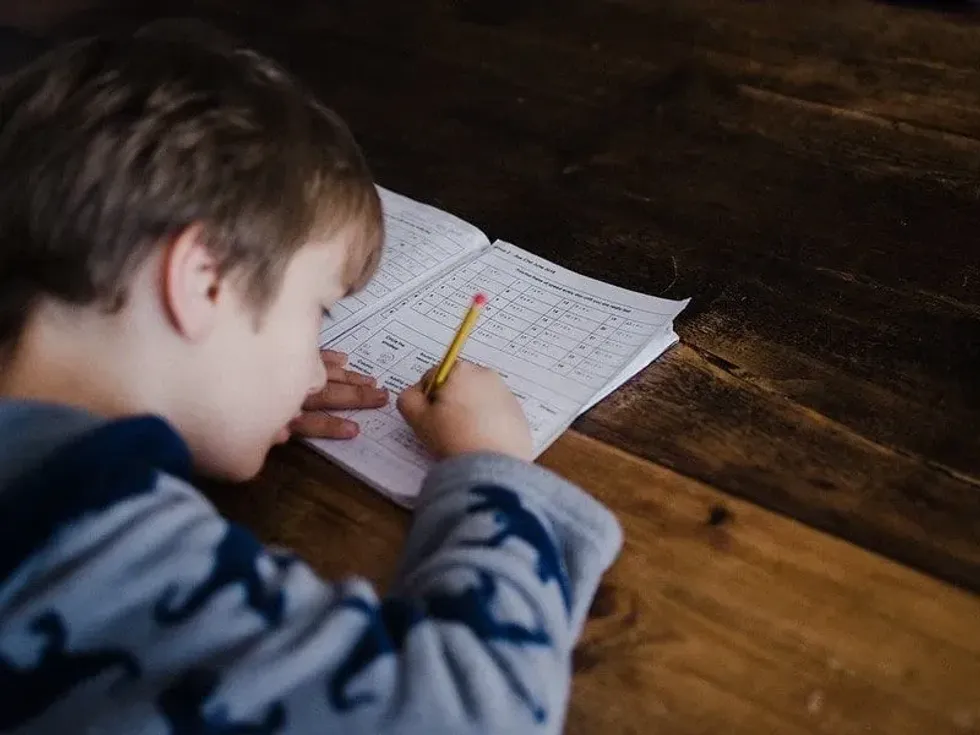Fractions in maths are a big part of the KS2 curriculum and are linked to other areas of maths (like decimals and percentages), so it's important for children to have a good grasp of it.
Kidadl has put together this resource to support parents, and help make your work just a bit easier. If you're all sorted with long division and partitioning numbers, fractions is the next logical step.
We'll start from the basics of fractions for Year 2 and upwards, then gradually ease into examples. Read on to see what it is about fractions KS2 kids need to know!

Image © Luzzi's Finchley
All About Fractions
Fractions are parts of a whole. If it's not a whole, it's a fraction! For instance, if I order a pizza with eight slices on, and one is eaten, I no longer have a whole pizza, I have a fraction of a whole pizza. Here are some simple everyday examples of fractions:
-Each slice of a cake is a fraction of the whole cake. If the cake is cut into four pieces, each piece is a quarter (1/4) of the whole.
-When baking, you might use half (1/2) of a teaspoon of salt. A whole teaspoon would be a full teaspoon, and so if you only put salt on half of the spoon, you've got half of a teaspoon of salt.
-If there are 14 biscuits in a packet, a full packet is a whole and each little biscuit is one fourteenth (1/14) of a packet.
-There are 60 minutes in an hour, and 30 minutes in half (1/2) an hour.

Explaining Fractions To KS2 Children
Explaining the complicated world of fractions can seem intimidating, so here are some tips!
Day-To-Day Fractions: Start off with examples of fractions you find in everyday life (like those mentioned above).
Props: Use any props you can find, (lollipop sticks, colouring pencils, cakes or cookies if you have) and use them to show a whole shape, then the same shape divided into fractions.
Get Baking: If you can also, bake a cake or pie, and explain fractions when cutting it!

Image © Sheri Silver
What Do Children Learn Each Primary KS2 Year About Fractions?

In Year 1 and Year 2, children are taught how to recognise halves, thirds and quarters, as well as begin to find halves of small whole numbers.
Year 3: Children learn tenths as fractions, tenths of a whole number and basic equivalent fractions, as well as comparing, adding and subtracting fractions, plus ordering.
Year 4: Now kids move on to equivalent fractions in greater detail, counting in hundredths, how to obtain a hundredth, how to obtain tenths and more advanced addition and subtraction, plus finding fractions of quantities and dividing quantities into the fractions, recognising basic decimal equivalents.
Year 5: Year 5 fraction questions will test knowledge of how to compare and order a greater range of fractions, how to spot and write equivalent fractions, how to identify and convert between mixed numbers and improper fractions, as well as more practice adding, subtracting, multiplying and dividing, incorporating knowledge of decimals and percentages also.
Year 6: Now students will learn how to simplify fractions, compare, and order, adding and subtracting with more skill, handing equivalent fractions and mixed numbers too (simplifying where necessary) as well as when practising how to divide and multiply fractions with the same or different denominators.
What Do Primary KS2 Children Need To Know About Decimals?

Year 3: Tenths, as related to the place value scale.
Year 4: Decimal equivalents to fractions, rounding, comparing decimals and money in problems.
Year 5: Decimal numbers up to three decimal places, identifying tenths, hundredths and thousandths and using this to compare them and solve problems involving addition and subtraction.
Year 6: Identifying the values of each digit of numbers given to three decimal places, multiplying and dividing numbers by 10, 100 and 1000, as well as by a one-digit whole number, using written methods.
Teaching Decimals To Primary KS2 Children
Money Money Money: Start off by explaining the difference between pounds and pence, how many pence there are in a pound, and why the pence sometimes appears as decimals when expressed in pound form.
Using Charts: Download or print a hundred square, and explain that the entire square represents one. If the whole thing represents one, 1 out of the 100 squares will represent 0.01, 2 out of the 100 squares will represent 0.02, and so on. Repeat for a ten square also!
Build On Existing Knowledge: By KS2 kids should be familiar with even numbers and their halves. Why not enlighten them to the decimal halves of odd numbers? By understanding that half of 3 is 1.5, things will start to connect and decimals will seem more logical.

Image © Crissy Jarvis
Bonus: Typical Fractions (KS2) Questions Explained
Finding A Fraction Of A Whole Number (such as 1/4 of 12): Multiply the numerator by the number (12), then divide by the denominator. Or, do the division first and multiplication second. 1/4 of 12 = 3.
Adding And Subtracting Fractions: If the denominators are the same, add/subtract the numerators as they are but don't add the denominators together. If the denominators are different, use your knowledge of equivalent fractions to change the fractions involved, so they can have the same denominator, then add/subtract as usual.
Multiply Fractions (such as 1/4 x 2/3): Multiply fractions by taking the numerators and multiplying them, then multiplying the denominators together. 1/4 x 2/3 = 2/12.
Divide Fractions (such as 1/4 divided by 2/3): Flip the second fraction upside-down and multiply by the first. 1/4 divided by 2/3 is 1/4 x 3/2, which equals 3/8.
Key Words:
Here are some words that are handy for parents to know when helping with this topic:
Numerator: The top part of the fraction, above the fraction line (the '1' in '1/2').
Denominator: The bottom part of the fraction, below the fraction line (the '2' in '1/2').
Unit Fraction: A fraction where the numerator is 1 (such as 1/3, 1/12 or 1/50).
Non-Unit Fraction: A fraction where the numerator is a number that is greater than 1 (such as 2/3, 4/12 or 11/50).
Equivalent Fraction: Fractions which have the same value as numbers, and are related by multiplying the numerator and denominator by the same number (for example: 1/2 = 2/4).
Proper Fraction: A fraction where the numerator is smaller than the denominator (like 2/3, 1/12, or 4/7).
Improper Fraction: A fraction in which the numerator is greater than the denominator (like 6/5, 3/2 or 24/10).
Mixed Number: A whole number mixed with a fraction, as a neater way of representing improper fractions (such as 1 and 1/5 instead of 6/5, or 1 and 1/2 instead of 3/2, or 2 and 4/10 instead of 24/10).
Simplified Fraction: A fraction that has been written as its smallest equivalent (for example, the simplified fraction of 4/8 is 1/2, and the simplified fraction of 10/100 is 1/10).














